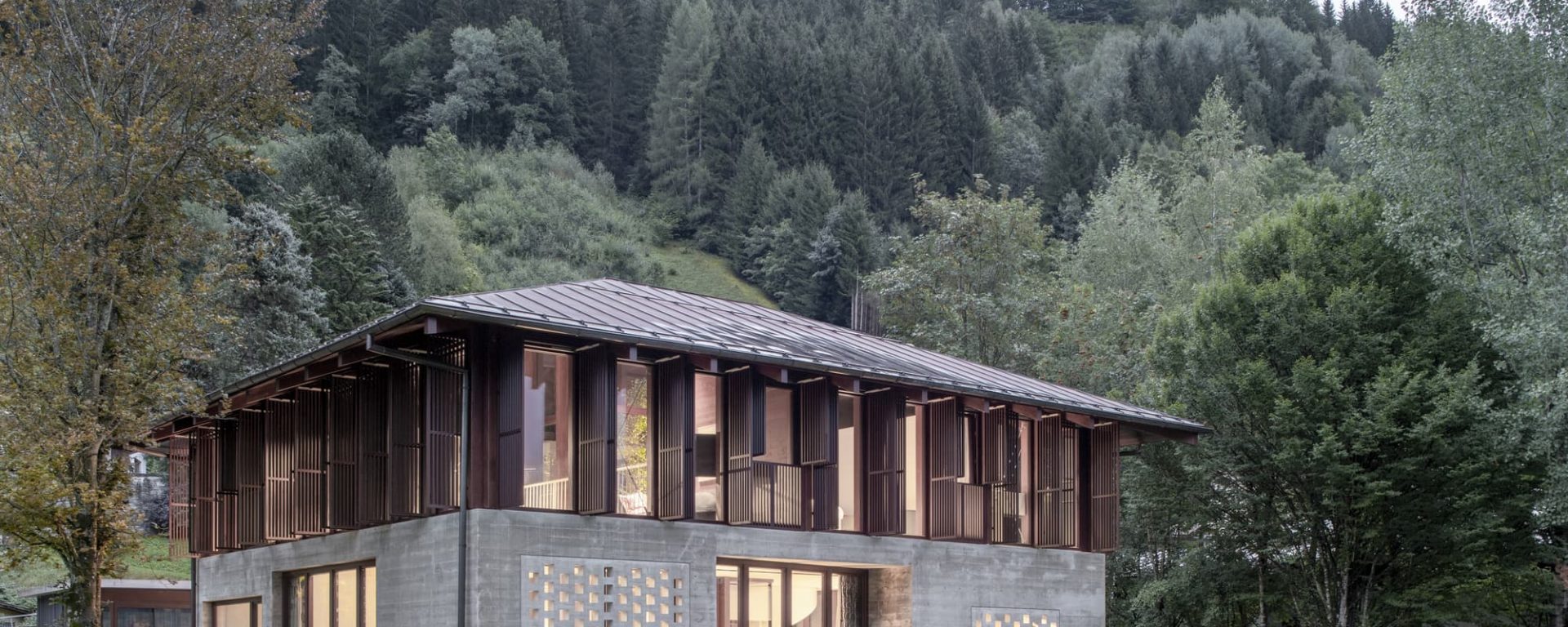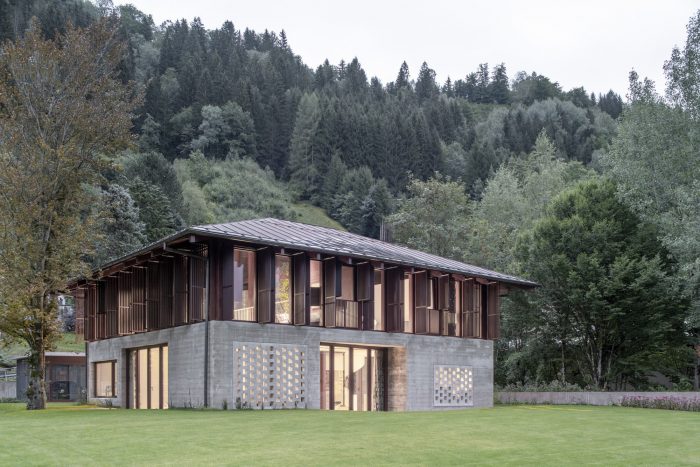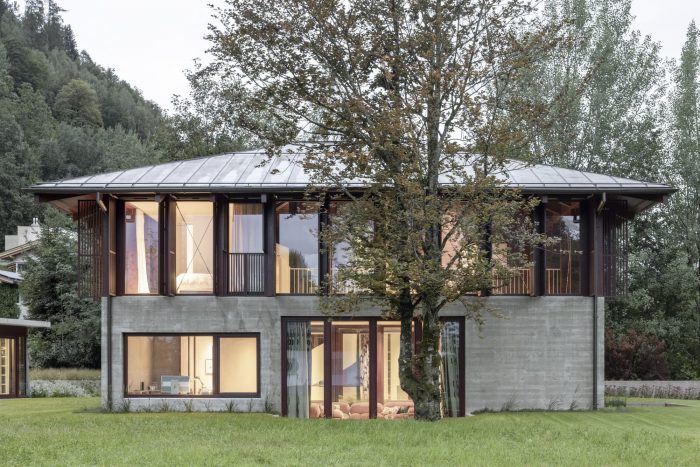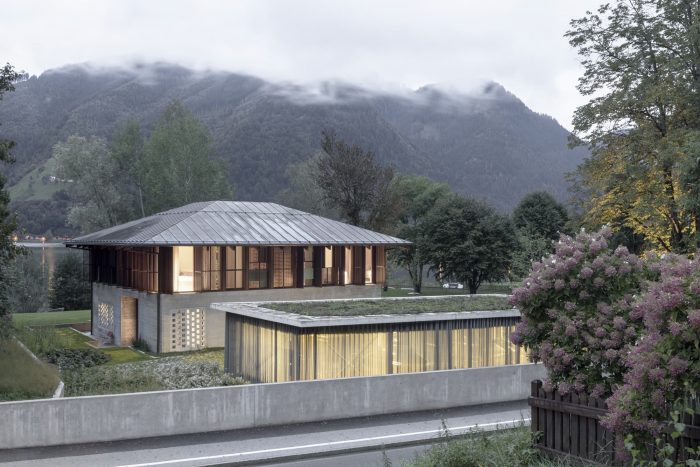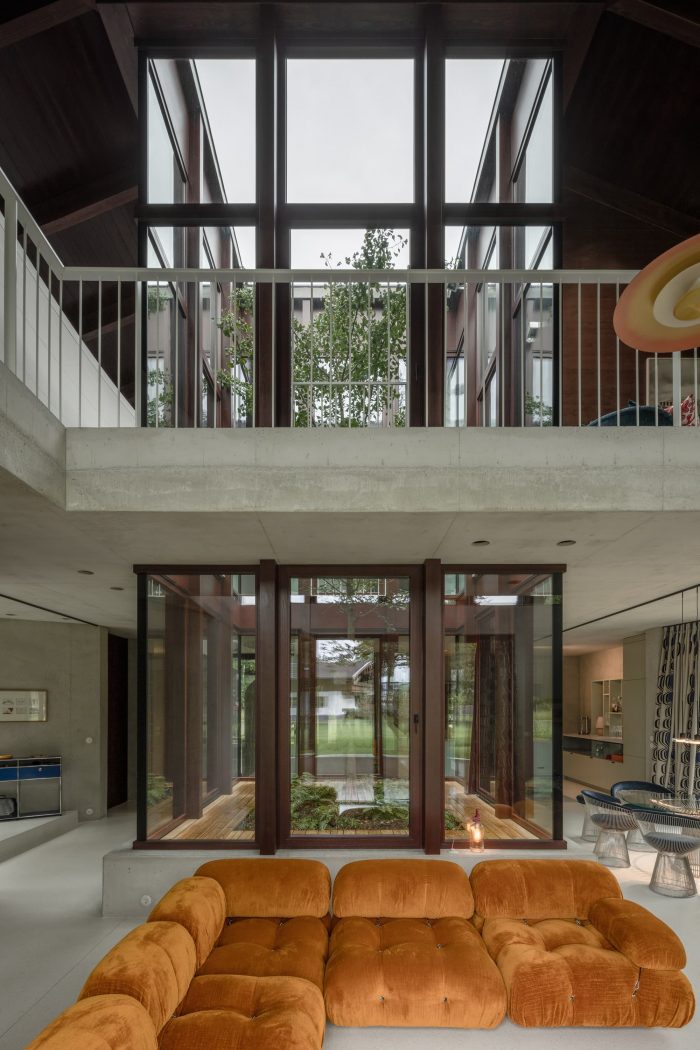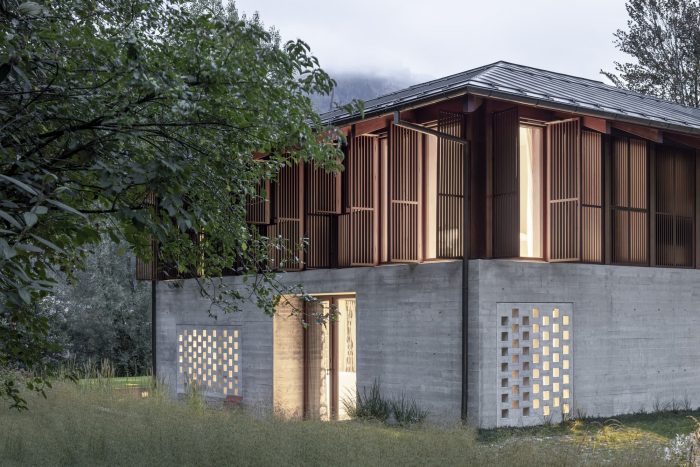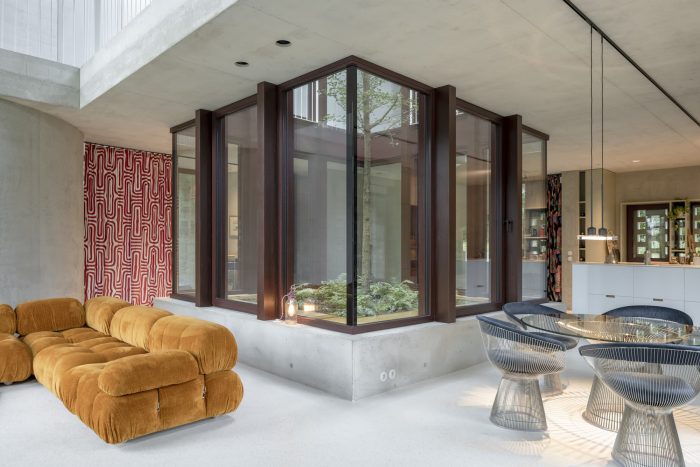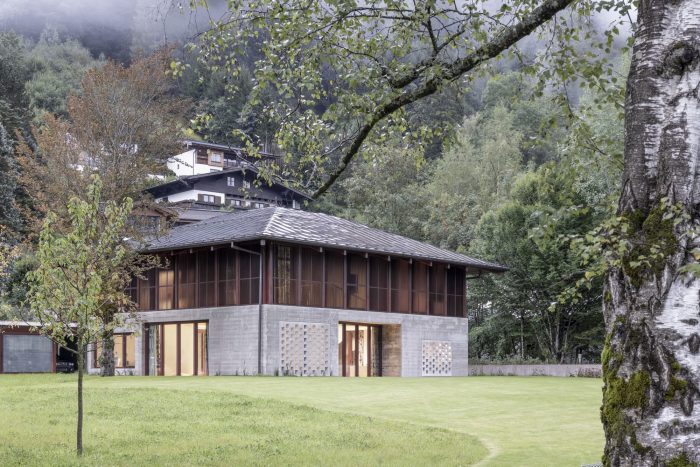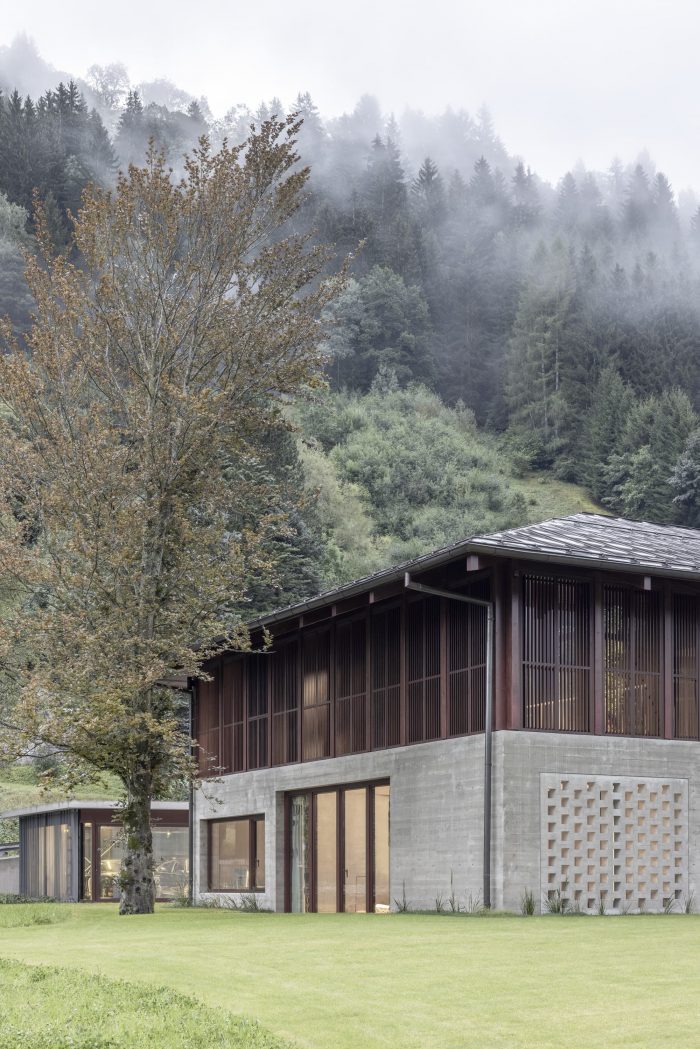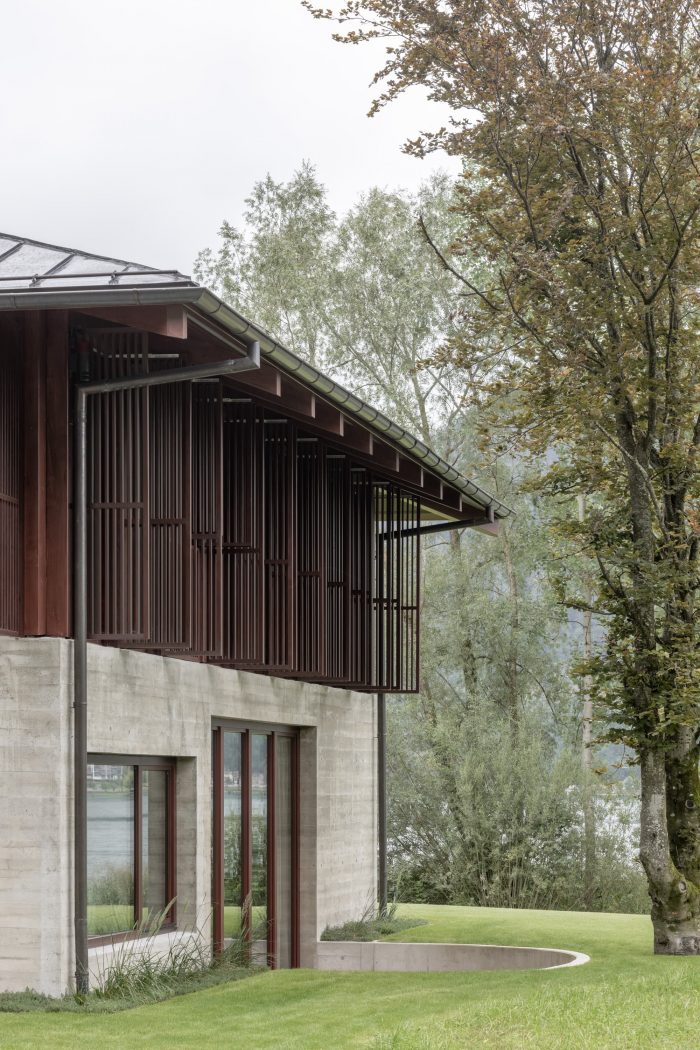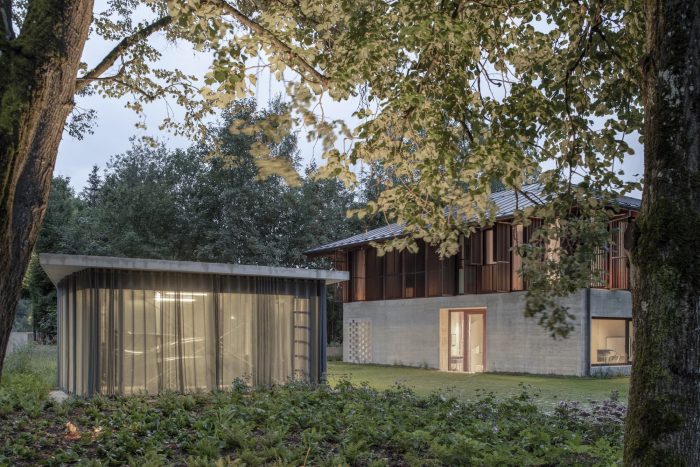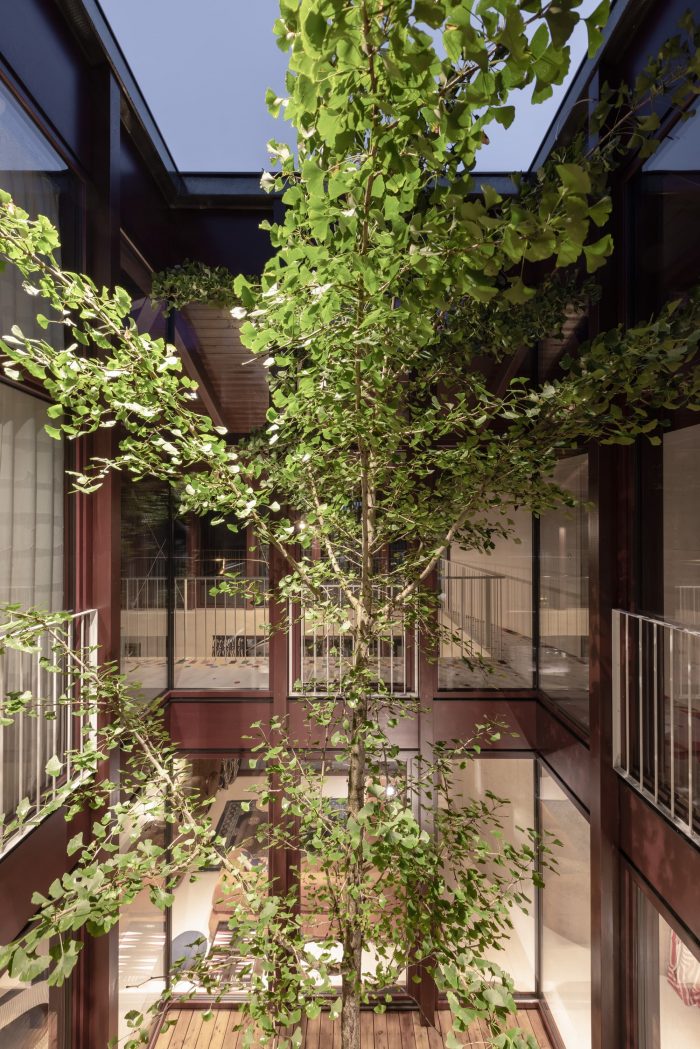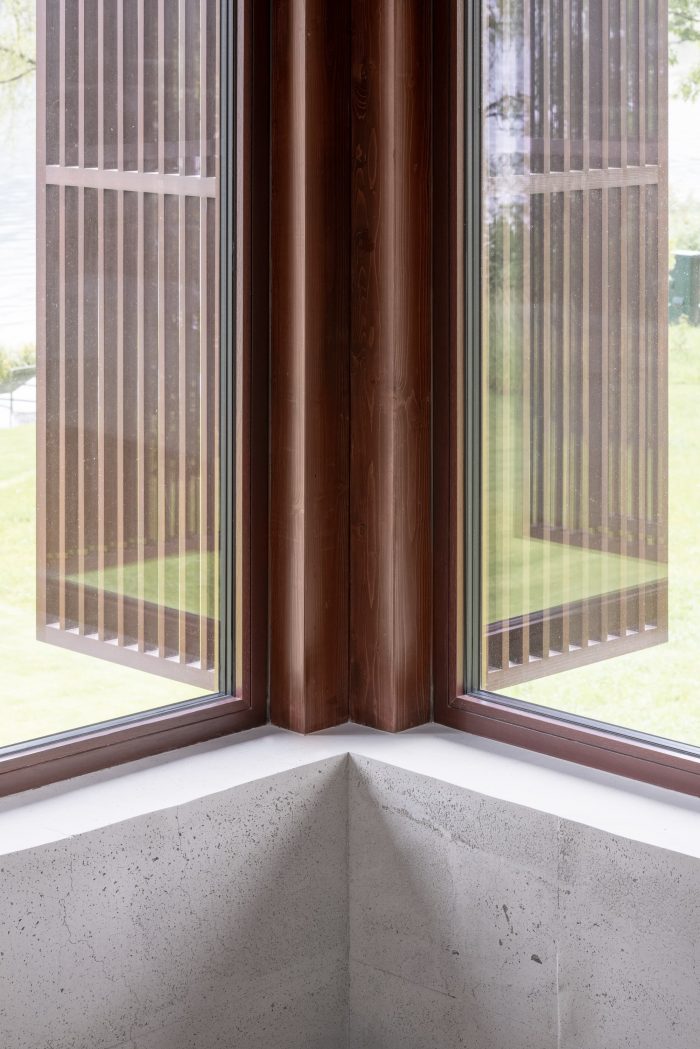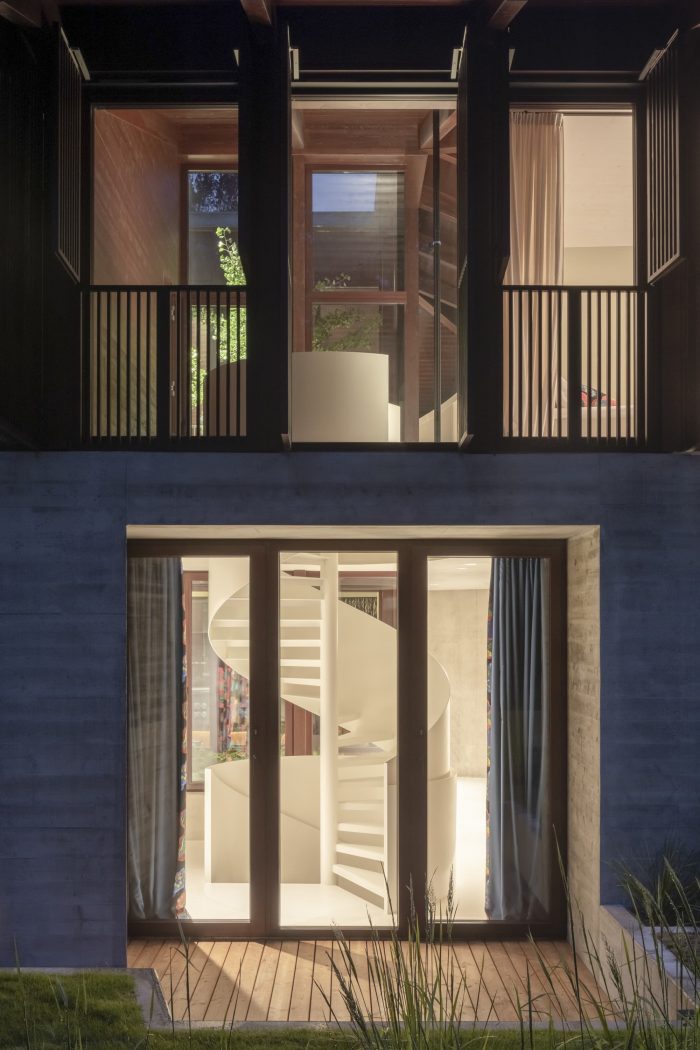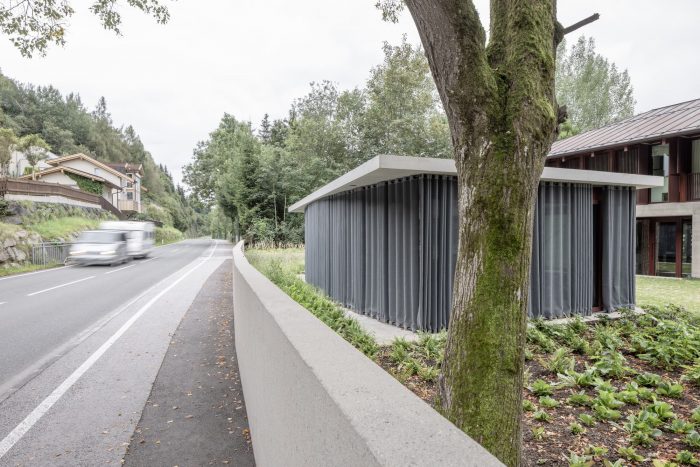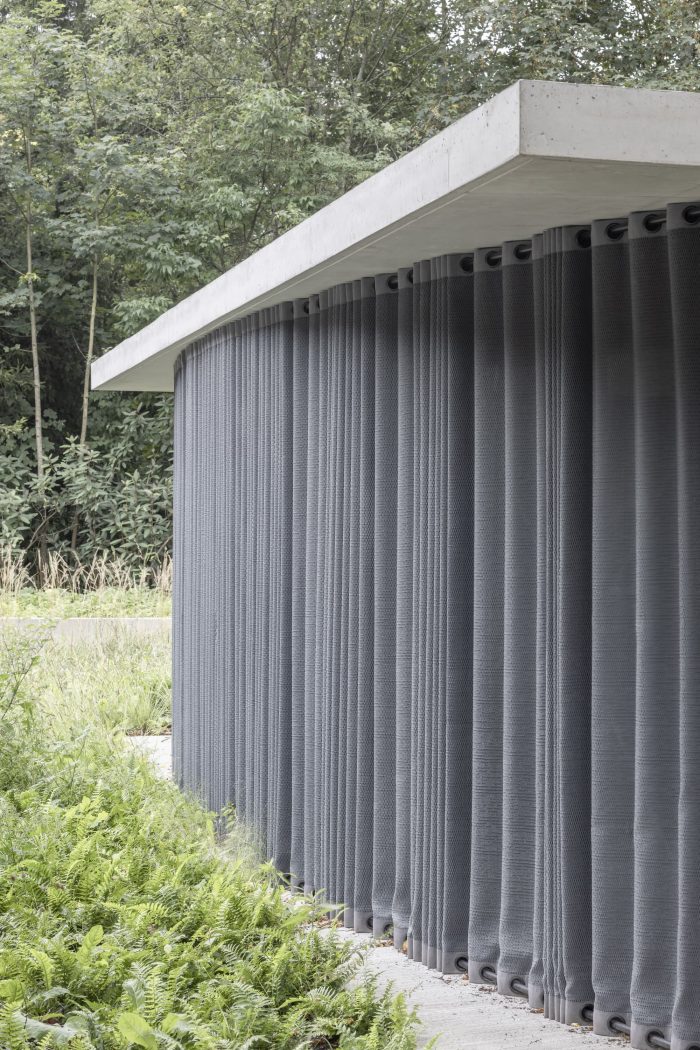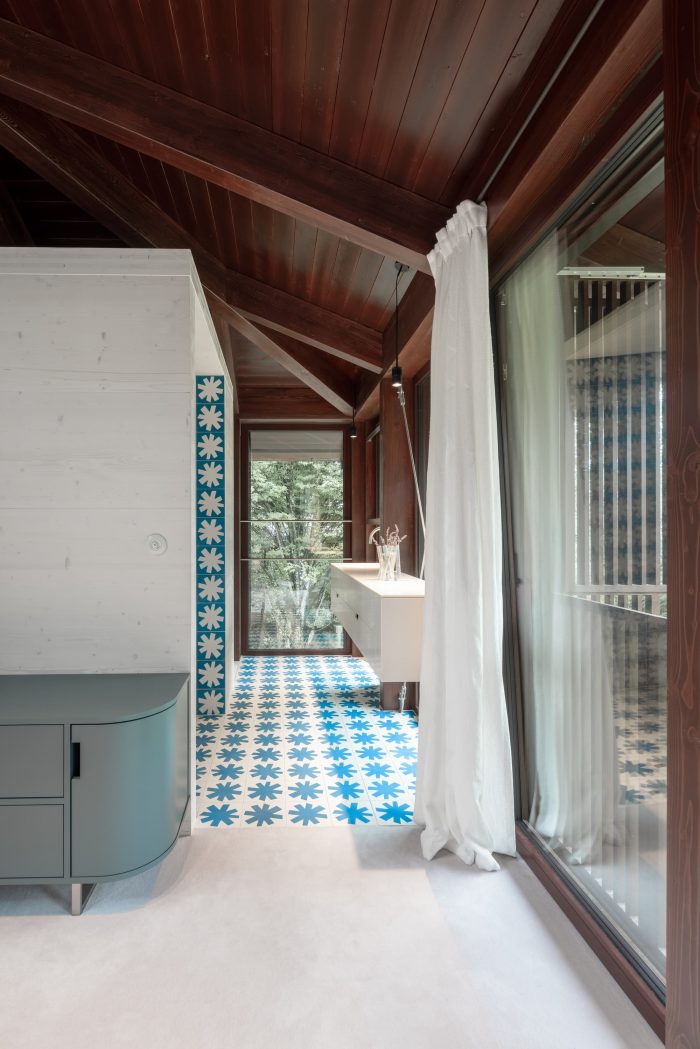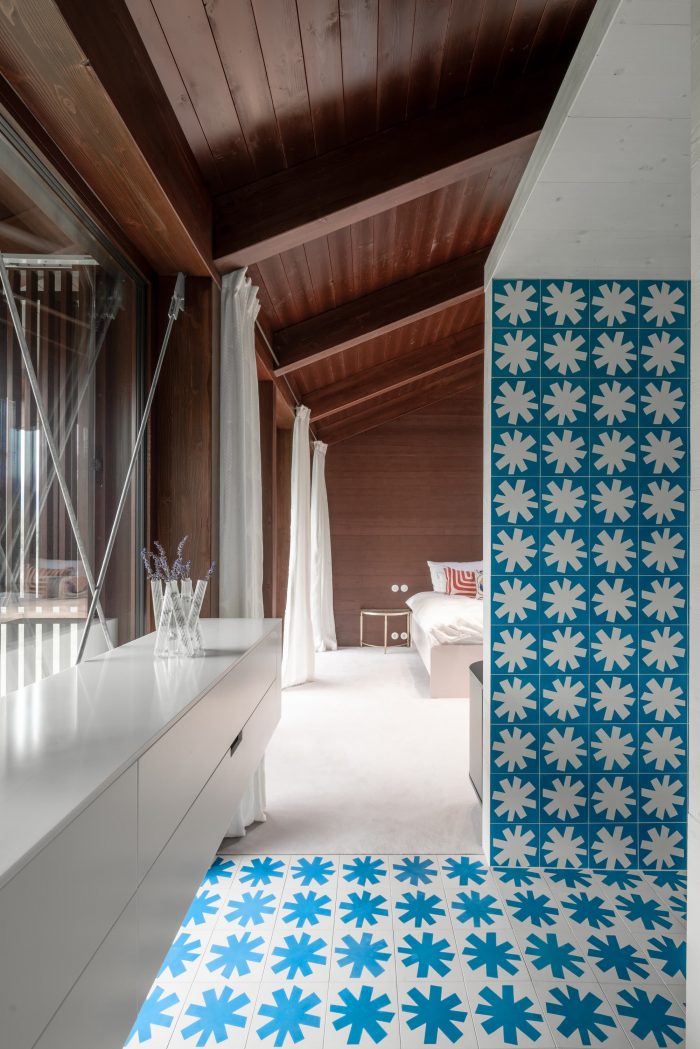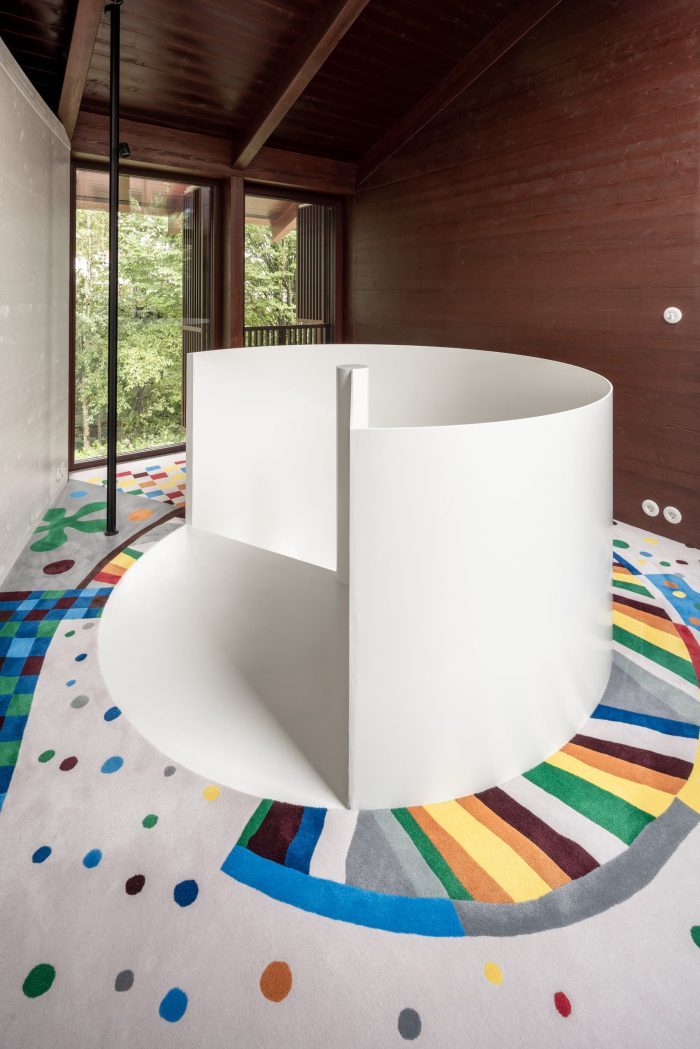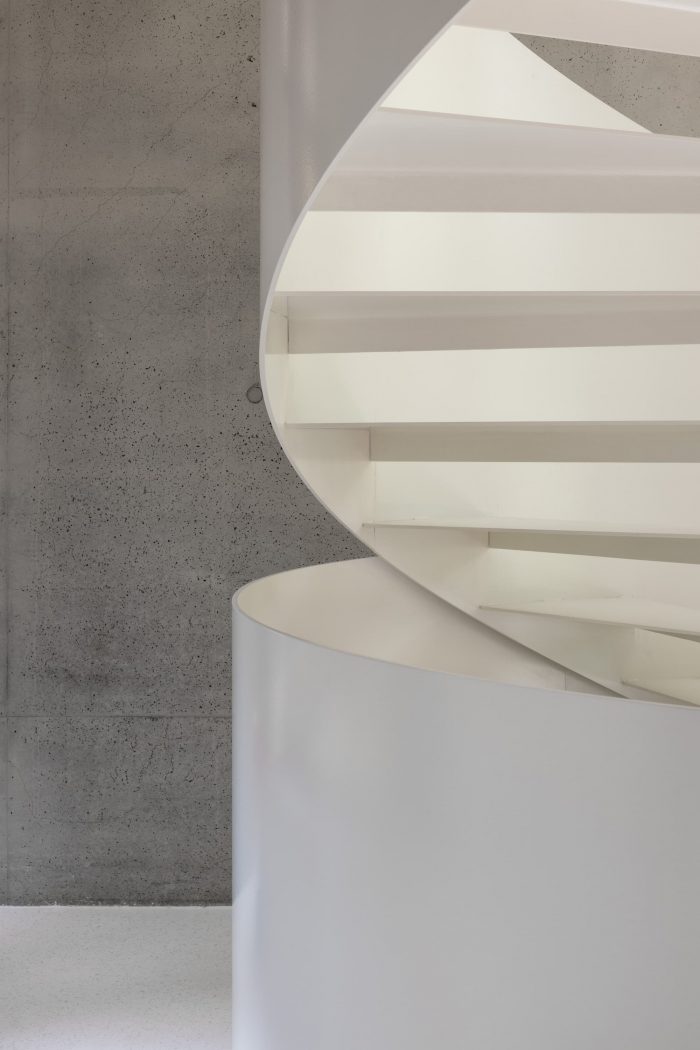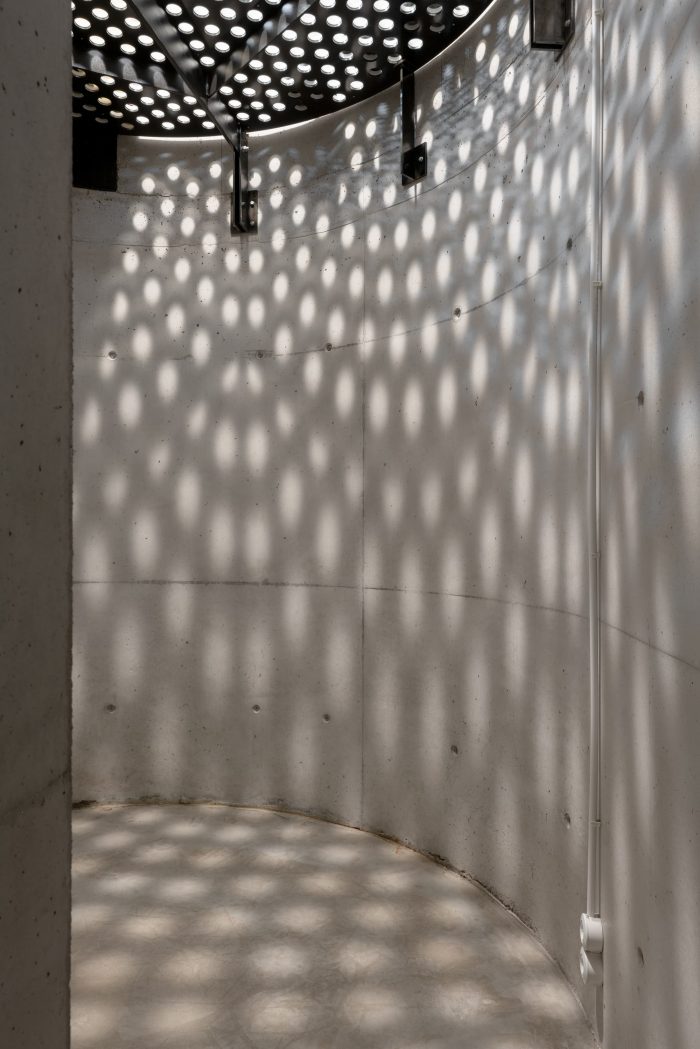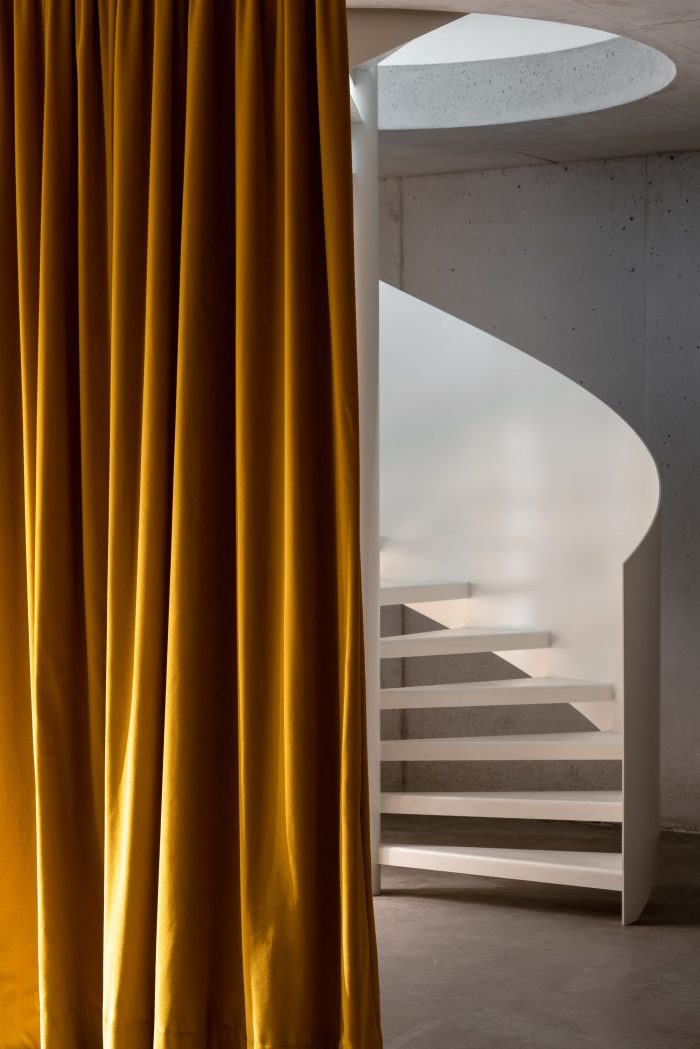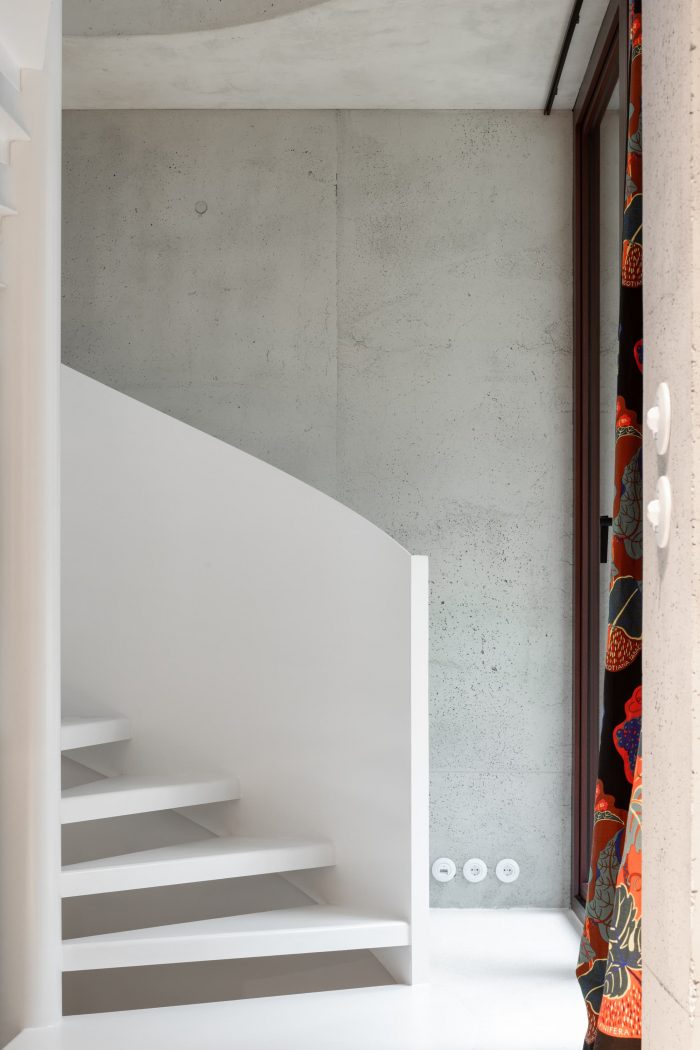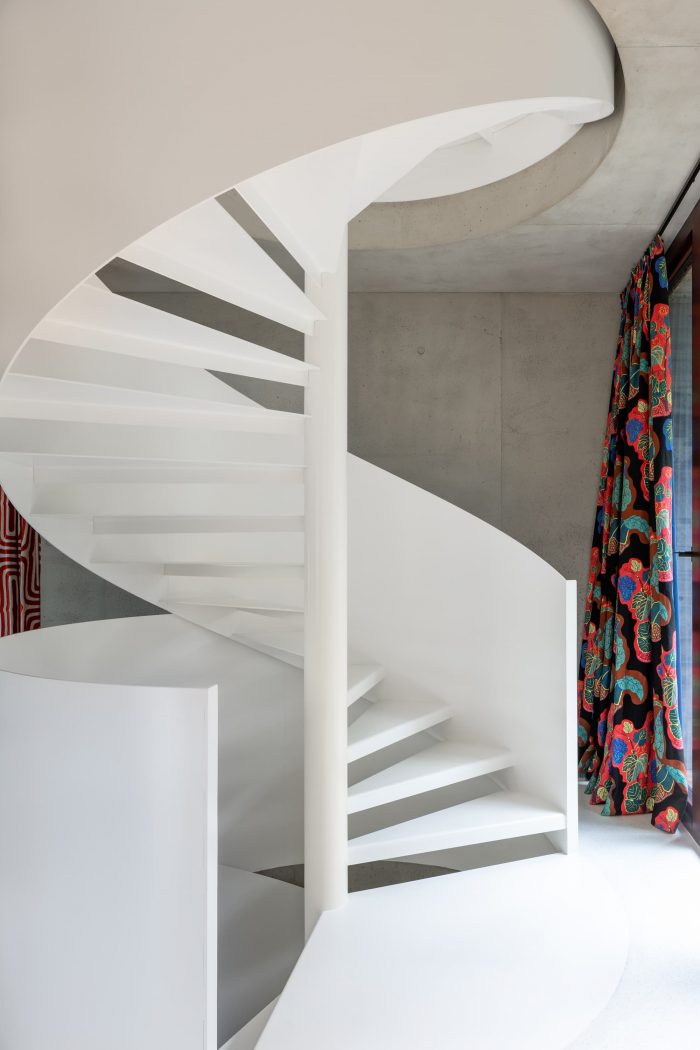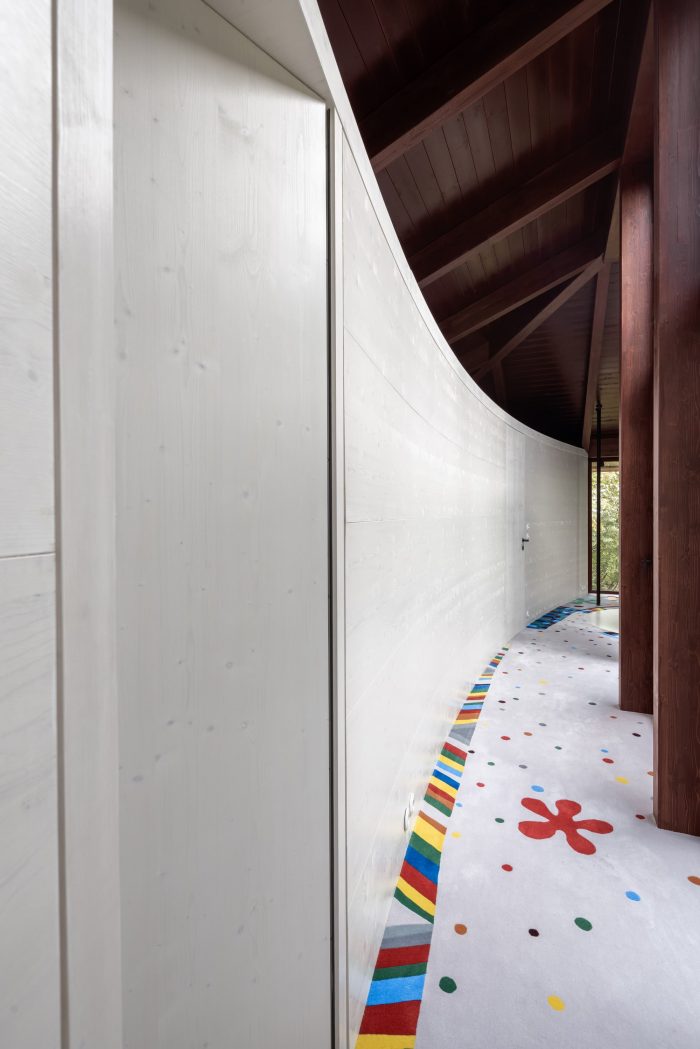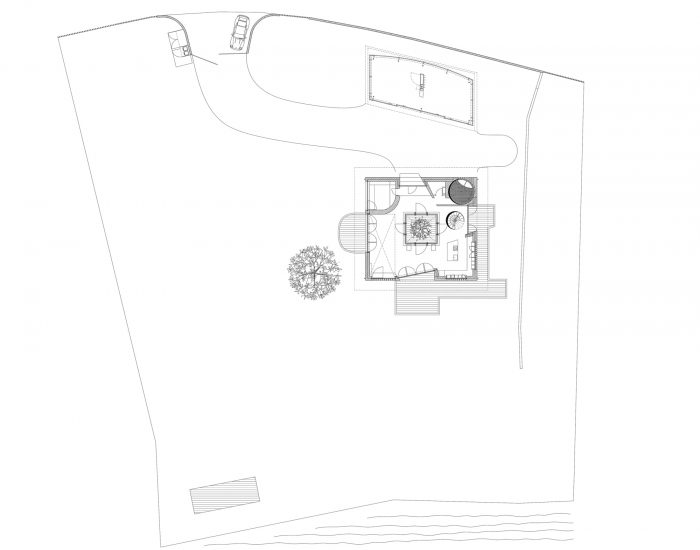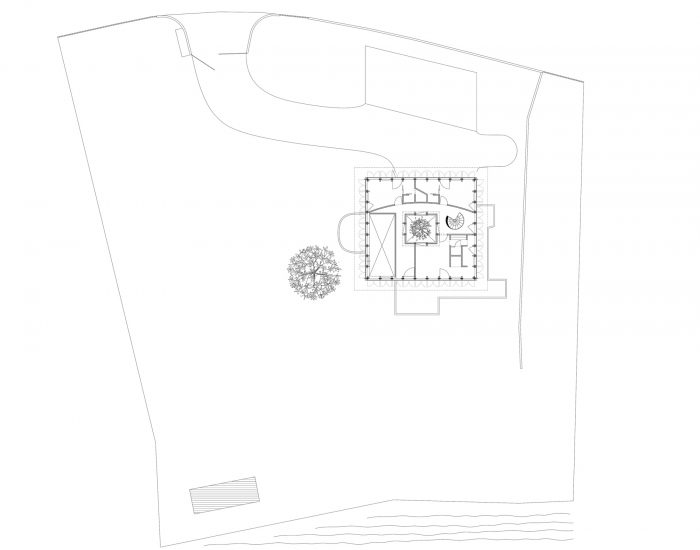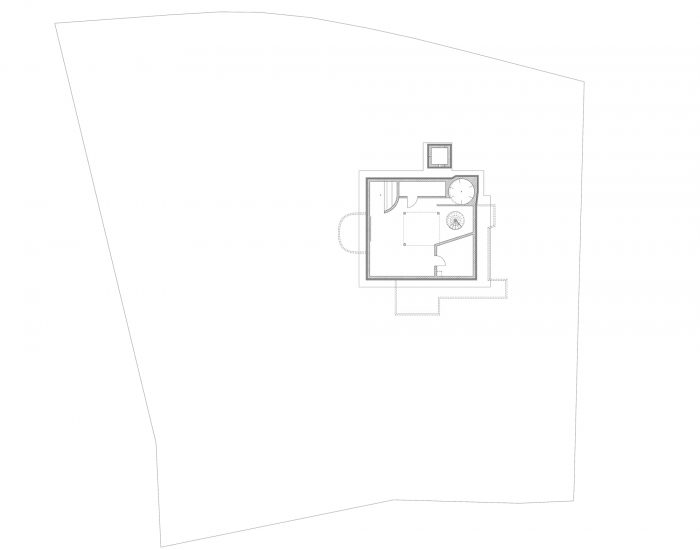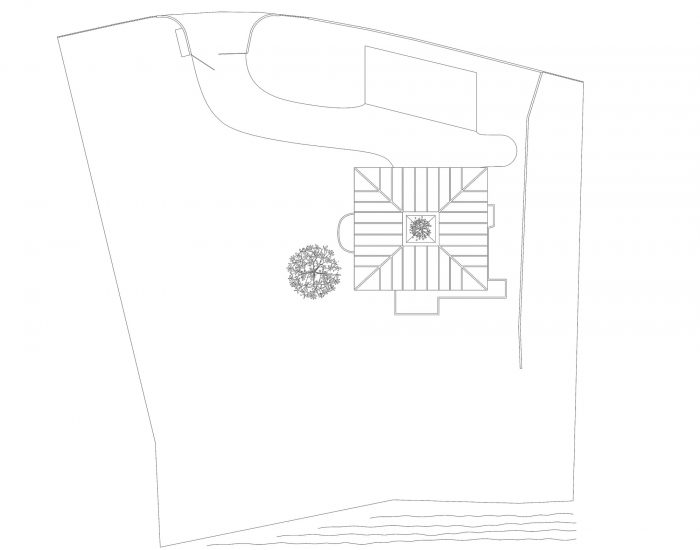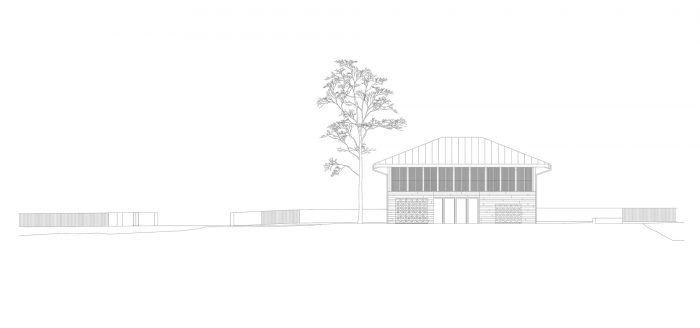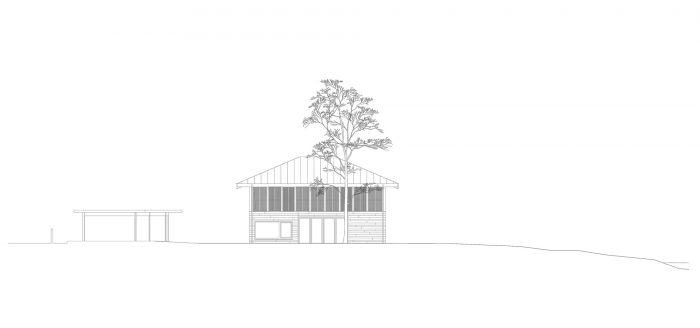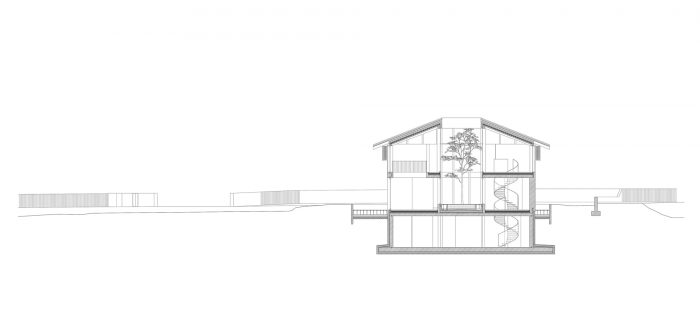在泽尔湖畔,有一座房子,它是流行语中的皇家,由于多年来的过度使用而失去了意义,可能真正适用。这个项目的出发点是正式的和后现代的:路易斯-卡恩的特伦顿浴室(新泽西州,1955)。因此,房子的金字塔式屋顶坐落在一个方形的底座上。因此,底层的分布。因此,院子从卡恩的屋顶开口处得到了启发。
Pick up the cadaver of the word c-o-m-p-l-e-x and drive it to the Austrian Alps. Tucked away on Lake Zell is a house to which that royal among the has-beens of buzzwords, depleted of meaning from years of overuse, might genuinely apply. The project’s starting point was formal and postmodern: Louis Kahn’s Trenton Bath House (NJ, 1955). Thus the house’s pyramid hip roof sits on a square base. Thus the distribution of the ground floor. Thus the courtyard takes its cue from the opening in Kahn’s roof.
但是底座需要原始的力量,而特伦顿的混凝土块是无法提供的。因此,整体混凝土被召唤出来,厚度为50厘米。整体混凝土具有可持续发展的特点:该地区的传统混凝土依赖于两层方案,中间夹着不可重复使用的绝缘材料。相反,这栋房子采用了绝缘混凝土,在混合物中散布了可重复使用的材料,以达到隔热的目的。在拆除的情况下,整个结构可以安全地分解。由于取消了传统的隔热层,窗户和门框可以自由地放置在暴露的地方。
But the base demanded primitive powers that the concrete blocks at Trenton would not provide. So monolithic concrete was summoned, fifty centimeters thick. Monolithic with a sustainable twist: conventional concrete in the region relies on a two-layer scheme, with a non-reusable insulating material sandwiched in between. Instead, this house employs insulating concrete, where reused material is scattered in the mixture for thermal insulation. The whole structure can safely decompose in the case of demolition. And having done away with the traditional insulating layer, window and door frames can be placed freely within the reveals.
这样的厚墙给人以稳定的明确印象,而设计则乐于找到与之对应的点。因此,有一连串的策略来平衡内部沉默的抛光混凝土:地下室有一个郁郁葱葱的黄色窗帘,一楼有彩色窗帘,上面的走廊有欢乐的地毯,浴室覆盖着明亮的彩色瓷砖,还有一个环绕车库的防水窗帘。而衔接所有三层的是:一个白色的、钢制的、螺旋形的楼梯,尽可能的薄,强调了人们在冰冷的混凝土墙壁上很难注意到的音调。
Such thick walls afford a categorical impression of stability, which the design then revels in finding counterpoints to. Thus the litany of strategies to balance the taciturn polished concrete inside: a lush yellow curtain in the basement, colorful curtains on the ground floor, a joyful carpet in the hallway above, bathrooms covered in bright colored tiles, and a waterproof curtain that wraps around the garage. And articulating all three levels: a white, steel, spiraling staircase, as thin as possible, emphasizing the tones one hardly notes in the frigid concrete walls.
但是,如果说基地是卡恩的作品,那么木制的一楼则是远东的作品。精致的百叶窗平衡了下面厚重的混凝土,并提供了一种与底层明显不同的看出去的方式。更加不确定。而当百叶窗在炎热的夏天被转动时,一楼的开放性几乎是绝对的。
But if the base looks to Kahn, the wooden first floor looks to the Far East. The delicate shutters balance the heavy concrete below and provide a way to look out that is markedly different from that of the ground floor. More uncertain. And when the shutters are pivoted on hot summer days, the openness of the first floor can be nearly absolute.
奇怪的是,尽管是并列的,但这栋建筑还是让人感觉有些古典。古典的方式是它的重量,使它坐在那里,庄严地注视着纯净的湖和对面的老城区。它的形状是古典的。它也是相当古典的,因为所有的立面几乎都是相同的,它们的门廊都在中间或稍微偏离中心。它是出乎意料的对称,略带帕拉迪奥风格,如果车库不是独立的,就很难实现,所以看起来像一个光滑的休息室,实际上是停车场–一个汽车的亭子。一种别墅+愚蠢的解决方案,两个体量之间的张力最终决定了房子的入口在哪里。
Oddly, and despite the juxtaposition, the building manages to feel somewhat classical. Classical in the way it administers weight so that it sits and stares stately at the pristine lake and the old town across. Classical in its shape. It is rather classical too because all elevations are nearly identical, their porticos right in the middle or slightly off-center. It’s unexpectedly symmetrical, slightly Palladian, which could hardly be achieved were the garage not detached, and so what looks like a sleek lounge is in fact parking – a pavilion for the automobile. A sort of villa + folly solution and the tension between the two volumes end up determining where the entrance to the house is.
这座房子还意外地让人想起弗兰克-劳埃德-赖特–赖特的Westcott House(1908年)和DeRhodes House(1906年),它们的木质第一层都位于更坚固的基础上。莱特的强烈气息当然是援引日本的一个可能的结果,莱特的作品特别是对那个国家有贡献。
And accidentally the house also reminds one of Frank Lloyd Wright – Wright’s Westcott House (1908) and DeRhodes House (1906) principally, with their wooden first floors sitting on sturdier bases. The strong whiff of Wright is of course a likely outcome of the invocation of Japan, Wright’s work being especially indebted to that country.
但是,外国的参考资料并没有从项目中抽走泽尔的方言。远非如此。日本的引文似乎很奇怪地在家里。在卡恩的 “浴场 “的鼓励下,设计避免了掩饰倾斜屋顶的诱惑,正如现代建筑所倾向的那样。相反,房子以其陡峭的斜坡为荣。悬臂也不含糊。它大方地延伸,并与下面的木制屏风相映成趣,这似乎是在精致和工艺方面的一个自然进步,而邻居的房子则半藏在阿尔卑斯山的树林中。
But the foreign references have not sapped the Zell dialect from the project. Far from it. The Japanese quotation seems curiously at home. And encouraged by Kahn’s Bath House, the design has avoided the temptation to disguise the pitched roof, as modern architecture tends to. Instead, the house wears its steep slopes with pride. Nor is the overhang coy. It extends generously and plays with the wooden screens underneath, which seem like a natural progression in delicacy and craftsmanship from the neighboring houses half hidden in the Alpine woods.
Architects: Steiner Architecture
Area : 450 m²
Year : 2022
Photographs :Florian Holzherr
Manufacturers : Artemide, Bisazza, Viabizzuno, FLOS
Lead Architects : Flo Oberschneider, Ferdi Porsche
Structural Engineering : Quercraft Gmbh
Contractors : Herzog Bau Gmbh
Architect : Max Sandner
Insulation Consultant : Ingenieurbüro Rothbacher Gmbh
Onsite Supervision : Lautner Bauconsulting Gmbh
City : Zell am See
Country : Austria

